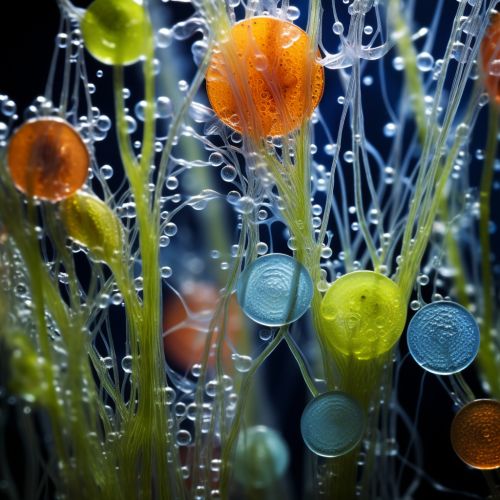Plastid Evolution and Endosymbiosis
Introduction
The evolution of plastids and the concept of endosymbiosis are integral to understanding the development of complex life forms on Earth. Plastids, including chloroplasts, are organelles found in plant cells and some algae that are responsible for functions such as photosynthesis and starch storage. The origin of these organelles can be traced back to a process called endosymbiosis, where one organism engulfs another, and instead of digesting it, retains it and benefits from its functions.


Plastid Evolution
Plastids are believed to have evolved from a group of free-living photosynthetic bacteria known as cyanobacteria. This process, known as primary endosymbiosis, occurred approximately 1.5 billion years ago. The engulfed cyanobacteria evolved into an organelle within the host cell, losing some of its independence and transferring some of its genetic material to the host's nucleus. This marked the birth of the first plastid.
Types of Plastids
There are several types of plastids, each with a specific function. The most well-known type is the chloroplast, responsible for photosynthesis. Other types include chromoplasts, which give fruits and flowers their vibrant colors, and leucoplasts, which are involved in the synthesis and storage of nutrients.
Endosymbiosis
Endosymbiosis is a mutually beneficial relationship between two organisms, where one lives inside the other. The concept of endosymbiosis has been pivotal in explaining the evolution of plastids. The theory suggests that a eukaryotic cell engulfed a photosynthetic cyanobacterium, which then became an endosymbiont within the host cell. Over time, this endosymbiont evolved into a plastid.
Primary and Secondary Endosymbiosis
Primary endosymbiosis refers to the initial engulfment of a cyanobacterium by a eukaryotic cell, leading to the formation of the first plastid. Secondary endosymbiosis occurs when a eukaryotic cell engulfs another eukaryotic cell that already contains a plastid. This process has led to the diversity of plastid types and functions we see today.
Evidence for Endosymbiosis
There are several lines of evidence supporting the endosymbiotic theory. These include the presence of two membranes surrounding plastids, the similarity between plastids and cyanobacteria in terms of size and structure, and the presence of circular DNA within plastids, reminiscent of bacterial DNA.
Impact on Evolution
The evolution of plastids through endosymbiosis has had a profound impact on life on Earth. It enabled the evolution of algae and plants, which in turn contributed to the oxygenation of the Earth's atmosphere and the development of complex life forms.
